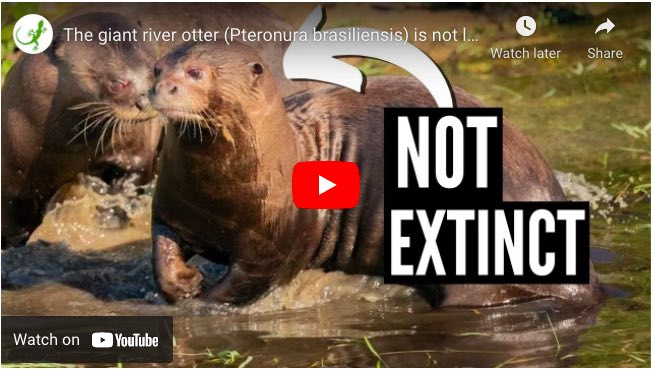Armadillos come in many sizes. The pink fairy armadillo is 13–15 cm (5–6 in) long, about the size of a two-week-old kitten. The extinct glyptodont was about the same size and weight as a small car!
Meet the giant armadillo

The giant armadillo. Image courtesy of Andre Borges/Agência Brasília (CC BY 2.0)
The giant armadillo is the largest living armadillo species. It grows up to 1.5 meters (4.9 feet) long and weighs up to 60 kilograms (132 pounds). Giant armadillos live across the northern part of South America.
The red area shows their range in South America:

Giant Armadillo (Priodontes maximus) range map. IUCN Red List of Threatened Species, species assessors and the authors of the spatial data., CC BY-SA 3.0, via Wikimedia Commons
Giant armadillos engineer their world

A giant armadillo at a burrow entrance. Image © Forest First Colombia (CC BY-NC), via iNaturalist
The giant armadillo is known as an ecosystem engineer because its behavior affects many other species in its ecosystem. A giant armadillo digs 5-meter- (16-foot-) deep burrows that provide shelter from predators. The burrow also protects the armadillo from extreme heat.
More than 20 other types of animals, including peccaries (small wild pigs), ocelots, and anteaters also use these burrows to escape from predators and heat. The giant armadillo builds a home for itself and for others!
Giant armadillos live alone. They are active at night. They have very large and sharp claws on their front feet that they use to rip open termite mounds. Watch out if you are a termite in the path of a giant armadillo – you are probably on the menu! Giant armadillos slurp up large numbers of termites, ants, worms, and other ground-dwelling invertebrates.
Giant armadillos vs. beekeepers
It turns out that giant armadillos also like honeybees. Beekeepers in the state of Mato Grosso do Sul in Brazil complained that giant armadillos were destroying their beehives to eat the honey in them. Conservation biologist Arnaud Desbiez was doubtful. Research showed that giant armadillos feed almost entirely on ants and termites, not honey.
But then the giant armadillos were caught in the act on video.

Camera traps confirmed that the giant armadillos use their heads and nose — not their claws — to topple over the hives to get to the bee larvae inside. Image courtesy of Wild Animal Conservation Institute.
“Lo and behold, we saw that giant armadillos were actually knocking over beehives,” said Arnaud Desbiez. It turns out that the giant armadillos are not actually after the honey. “It’s not eating the honey, it’s eating the bee larvae. But it means it destroys the honeycombs. It destroys everything.”
For the giant armadillos, it’s an easy protein-rich meal. For the beekeepers, it means a loss of livelihood. They sell the honey that the bees produce to make their living. Some beekeepers poisoned the giant armadillos in retaliation.

After toppling over the beehive, the giant armadillo ignores the honey and feeds on the bee larvae. Its thick skin and armor protect it from the relentless attacks from the angry swarm. Image courtesy of Wild Animal Conservation Institute.
How do you protect beehives and armadillos, too?
To minimize this human-wildlife conflict, Arnaud Desbiez came up with a solution: armadillo-friendly honey. “We decided to find a way to promote coexistence between beekeepers and giant armadillos,” he said.
Giant armadillo-friendly honey happens when beekeepers adopt measures to protect their hives from giant armadillos, while ensuring no harm comes to the armadillos. In return, the beekeepers receive an armadillo-friendly honey certificate. They can add this certificate to their products to notify buyers and boost the honey’s value.
“The certification provides a greater added value to the honey, so we can sell it at a better price,” Antonio Adames, a beekeeper in the Brazilian Cerrado savanna who is involved in the Armadillos & Honey Project. With the certificate, Adames said that he sells his armadillo-friendly honey for 20% more than regular honey.
For smallholder beekeepers, who sell their honey at local markets, the Armadillos & Honey Project gives them another reason to protect armadillos. It supplies them with queen bees, which are more valuable to them than certificates.
“The idea is always that coexistence with giant armadillos provides benefits,” Desbiez said.

The first beekeeper (on the left) to receive a queen bee as an award for adopting mitigation measures that humanely prevent giant armadillos from toppling over and destroying the hives. Image courtesy of Wild Animal Conservation Institute.
Why is there a conflict between beekeepers and giant armadillos?
Arnaud Desbiez first heard about the giant armadillo and beekeeper conflict in 2015 during a field expedition in the Brazilian Cerrado savanna. The Cerrado is an ecosystem that is highly fragmented. It has been deforested at a rate of 2.5 times higher than its neighboring ecosystem, the Amazon Rainforest. More than half of the Cerrado has been transformed into swaths of eucalyptus, soybean, and sugarcane, or pastures for cattle.
The remaining fragments of native vegetation are shared by both armadillos and beekeepers, who place their hives close to Cerrado flowers. It’s this habitat overlap that leads to wildlife-human conflicts.
In a 2020 study, researchers surveyed 178 beekeepers in the Cerrado and found that nearly half of them reported giant armadillos had damaged their hives.
The same study found that giant armadillos can topple and break apart up to five hives in one night. One beekeeper lost 120 hives in two weeks, while another lost 460 hives during his 14 years as a beekeeper. Others had to abandon specific areas where they produced honey due to these conflicts.
The loss of livelihood has led to some beekeepers poisoning armadillos to prevent them from attacking the hives. These killings can have a devastating impact on the armadillo populations. Armadillos have just one pup every three years and only reach sexual maturity at 7-8 years old. The loss of a single individual giant armadillo can significantly impact the giant armadillo population.
As part of the Armadillos & Honey Project, Arnaud Desbiez uses monitoring, research and education to develop the armadillo-friendly honey that supports both giant armadillo conservation and the beekeepers’ livelihoods.

The Armadillos & Honey Project works with local communities to protect giant armadillos and beekeepers’ livelihoods. Image courtesy of Wild Animal Conservation Institute
To get the certificate, beekeepers must adopt specific measures to reduce conflict. These include using elevated stands or electric fencing with underground barriers to prevent armadillos from tunneling through. The 1.3-meter- (4.3-foot-) high stands have proven to be the most effective, Desbiez said. These stands are low-cost and can be made with easy-to-find materials. The beekeepers also promise to commit to other sustainable practices, such as adopting safety measures when using smoke to avoid fire risks and no deforesting.
By collaborating closely with beekeepers, Arnaud Desbiez has helped issue more than 100 certificates throughout the Cerrado in Mato Grosso do Sul. He is now working to help beekeepers in the Amazon Rainforest region also looking to prevent giant armadillos from attacking their hives. “These conflicts are always in areas where the habitat has been quite altered,” Desbiez said.
Once unable to eat the bee larvae, the giant armadillos go back to finding ants and termites to feed on. “Preventing [them from eating larvae] doesn’t decrease or harm them in any way,” Desbiez said. “It just enables them to coexist with the beekeepers.”
Based on an article by Sarah Brown, published on Mongabay.com. Adapted for Mongabay Kids by David Brown.






